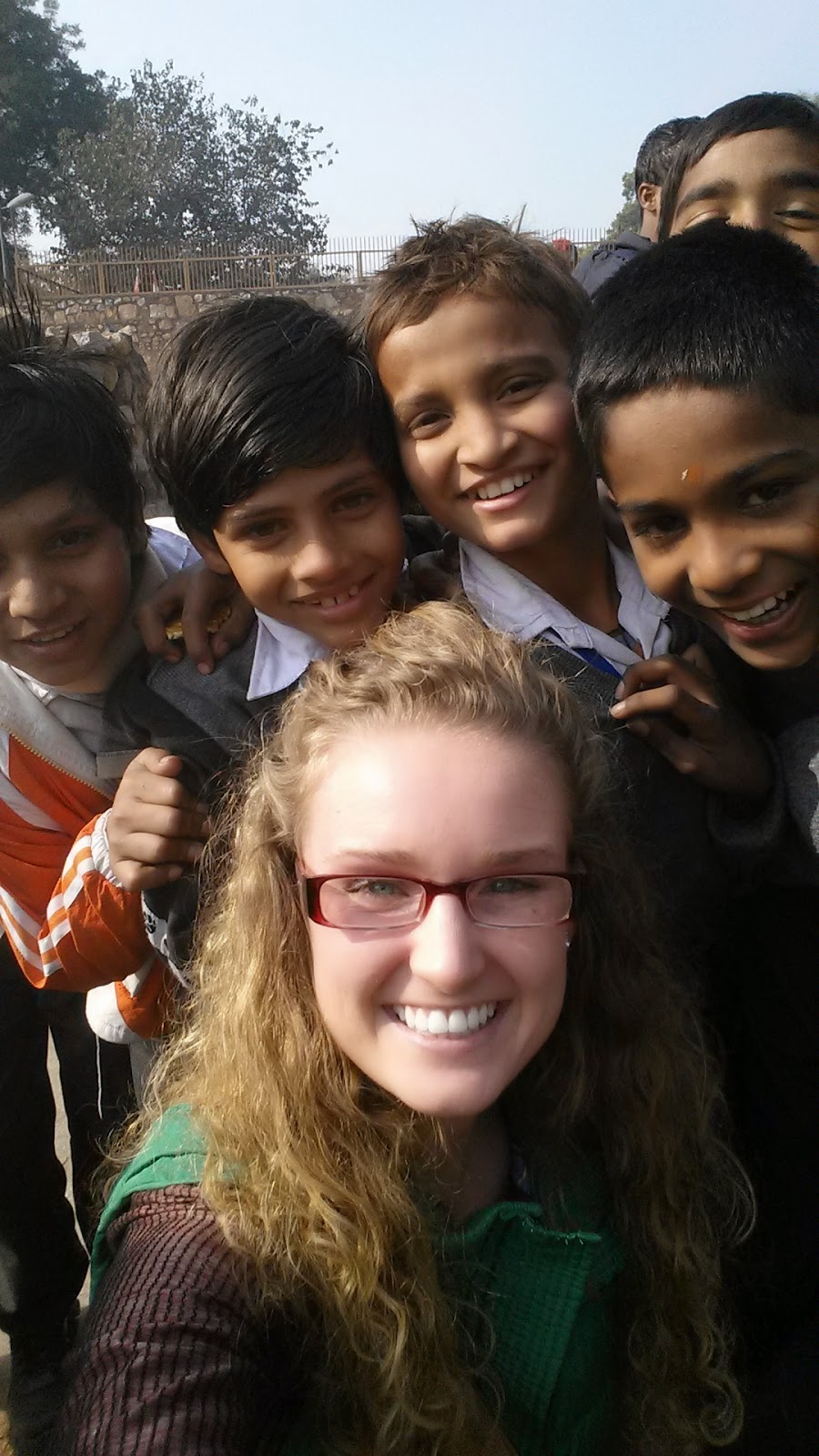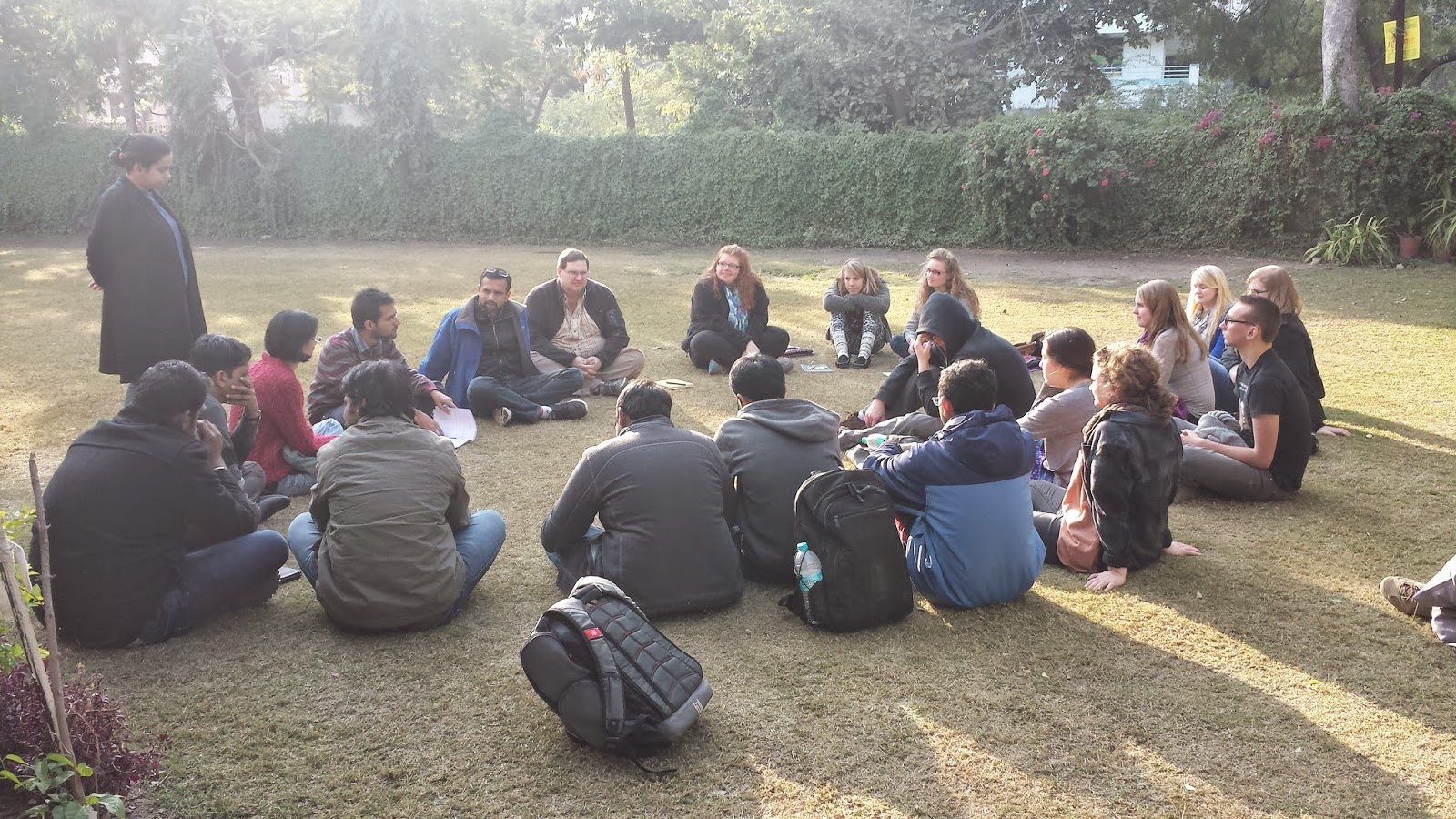At the end of the first week, our research team wrestled with some surprising and confounding information. We realized our hypothesis needed to be revised. While our group has not formally sat down to come to a consensus and fine-tune the wording of a new hypothesis, it should more broadly and systemically include multiple probable causes and possible solutions to the issue of deforestation and household air pollution in rural Rajasthan, India (I.e. not just household chulhas are the problem, and solar cookers can solve the issue).

Problem: Deforestation and subsequently, the expansion of the Thar Desert (located in northwestern India along the border between Pakistan and India) is a growing threat to the remaining semi-arid forests southeast of the Aravali Mountains. The destructive encroachment is visibly noticeable, as captured in this photograph. Notice the difference in forest coverage between the foreground (remaining semi-arid forests) and the background (deforested Aravali foothills). This land was all once a jungle.
Problem: Household Air Pollution (HAP) is the third leading cause of death in India. The kitchen walls of a home in Iswal (a village 15 km outside of the city of Udaipur) are stained from years of exposure to the toxic smoke produced from the traditional, wood-burning chulha used twice daily by this family for cooking.
My hypotheses, then and now:
Ø Hypothesis (old): If harvesting trees for wood to cook food is causing deforestation in the forests skirting the Aravali Mountain Range, then solar cookers and high efficient cookstoves could be deployed to avoid desertification of the land and devastation of lifestyles in rural Rajasthan, India.
Ø Hypothesis (new): If deforestation in the areas surrounding Udaipur is a consequence of population growth, then a clear understanding of the involved system’s structure and behavior is necessary to devise, deploy, and sustain the simplest, multi-faceted techno-geopolitical-socio-economic solution possible/plausible.
Gaining one mother's perspective on development and
deforestation from her housetop in Gogunda.
Based on what I've learned so far, a simple multi-faceted solution could break down like this:
· Techno: modify traditional chulhas (our team is currently working on a simple, low-tech solution to increase airflow and ventilation, separate from the design of a HEC or solar cooker)
· Geopolitical: partition common lands into privatized and protected lands (eliminate Tragedy of Commons phenomena in a way that distributes ownership and thus responsibility of forests in a more effective way, while also allowing devastated forests to regenerate naturally in strictly-enforced “off-limit” reserves that could provide investment revenue from eco-tourism); foster overlapping circles of local, state, and national governance
· Socio-economic: establish a standard for household air quality in rural communities that is (and can be) actively monitored, achieved, and enforced; involve all stakeholders in decision-making, physical infrastructure building, and governance processes so changes are valued-added and representative of the needs of the people most directly affected; educate communities about the economic value of sustainable cooking, farming, and water collection, and the costs/risks associated with unsustainable practices in these areas
Of course, this breakdown is one perspective. I will need to share it with stakeholders so it can be scrutinized, tested, debated, discussed, refined, modified, etc. Fortunately, our research plan has grown to include additional mini-studies since we've been in India. These "bonus features" are helping me hone my hypothesis and solution:
1) Engineer an “Improved Chulha” (IC)—Come up with a way to improve preexisting chulhas (as opposed to deploying a different cookstove…HEC, solar, and/or otherwise) so traditional stoves are less-toxic and more energy efficient. I look forward to prototyping a few of our concept sketches in the coming two weeks while I’m still in India.
2) Engage with Forestry Leaders—meet with leaders at the local and state level who are involved in forestry governance, stewardship, management
Meeting with the Assistant Chief of the State Dept. of Forestry Management in Udaipur.
Meeting with the Tribal Secretary of Forestry Management in Karech.
3) Create an “Energy Gradient Map”—find out what type of stoves and biomass fuels are used in the communities between our three test sites; collect data every 10-20 km along the route from Udaipur (our city setting) through Gogunda (our town setting) to Karech (our village setting) that effectively maps out changes in energy usage and demographics
Hanging out with my new friends in a village on the outskirts of Gogunda.
Both mothers now operate outdoor chulhas because the smoke was too
difficult to handle when they cooked inside their homes.
Tea time! The hospitality of Indian families is unlike
anything I've ever experienced in America.
Once again,
I am reminded that a wider lens captures more unknowns, but in the process, provides a clearer focus, a better picture of how things really are. The more I learn, the more I realize I have more to learn as an engineer, as a problem-solver.
Engineers make things.
Industrial Engineers make things better.
I am thankful for my collegiate education, mentors, teachers, and classmates at the University of Iowa who have shaped who I am and what I want to do with what I have learned and still need to learn.
Wide Lens. Clear Focus. Now smile big and say cheese! J
Goat in Gogunda (one of many).
‘cuz life is good and [with a positive attitude and the
help of industrial engineers] keeps gettin’ better
 The results are in! Johan and I are CoGreen Officers of the MCR for Trinity Hall this academic year. We are both quite pleased and keen to act on our platform straight away.
The results are in! Johan and I are CoGreen Officers of the MCR for Trinity Hall this academic year. We are both quite pleased and keen to act on our platform straight away.






































